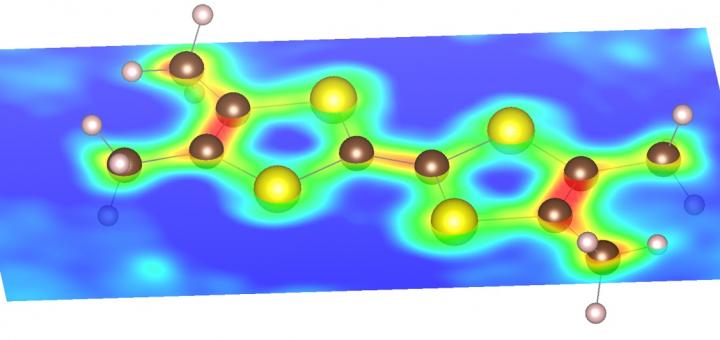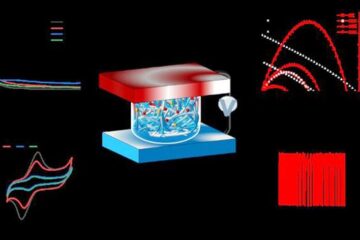Nagoya physicists resolve long-standing mystery of structure-less transition

Electron density distribution of the frontier orbital of a TMTTF molecule. Electrons of the constituent atoms of the molecule can be considered as either core electrons, which have no interactions with the surroundings, or electrons of frontier orbitals, which determine many physical properties of the molecule. We succeeded in visualizing the frontier molecular orbital distribution of a TMTTF by precise structural analysis using a core differential Fourier synthesis (CDFS) method. Credit: Shunsuke Kitou
We normally associate conduction of electricity with metals. However, some of the high measured conductivities are found in certain organic molecular crystals. Metallic, semiconducting and even superconducting properties can be achieved in these materials, which have interested scientists for decades.
Changing temperature or pressure causes phase transitions in the crystal structure of molecular conductors and their related conduction properties. Scientists can usually determine the crystal structure using X-ray diffraction. However, structural change accompanying phase transition in a particular organic crystal (TMTTF)2PF6 has defied examination for almost 40 years.
Now, a research team at Nagoya University has finally explained the mysterious structural changes of this phase transition and its related electronic behavior.
“Researchers have questioned that the TMTTF (tetramethyltetrathiafulvalene) salt shows a charge disproportionation transition at 67 Kelvin but no relevant changes in its crystal structure. This transition is a long-standing mystery known as a 'structure-less transition',” explains lead author Shunsuke Kitou.
TMTTF is an organic donor that is also found in some organic superconductors. Just above the temperature that liquid nitrogen freezes, this organic crystal behaves as an insulator. But as the temperature is lowered it goes through electronic and magnetic changes.
Until now these structural changes were too small to measure directly. Using the X-ray source at SPring8, in Hyogo Japan, the team could precisely determine the crystal structure at each stage. The structure-less transition involves the formation of a two-dimensional Wigner crystal, based on a change in the distribution pattern of electrons in the structure.
“We have precisely characterized the subtle structural changes across this transition and finally provided a complete physical explanation for the apparent unchanging structure of this organic conductor,” says group leader Hiroshi Sawa. “Accurate crystallographic data is still lacking for many organic conductors and we hope our findings will inspire other groups to look more closely at these systems. A better understanding of their complex behavior could pave the way to a range of new functional electronic materials.”
###
The article, “Successive Dimensional Transition in (TMTTF)2PF6 Revealed by Synchrotron X-ray Diffraction,” was published in Physical Review Letters. https:/
Media Contact
All latest news from the category: Materials Sciences
Materials management deals with the research, development, manufacturing and processing of raw and industrial materials. Key aspects here are biological and medical issues, which play an increasingly important role in this field.
innovations-report offers in-depth articles related to the development and application of materials and the structure and properties of new materials.
Newest articles

Superradiant atoms could push the boundaries of how precisely time can be measured
Superradiant atoms can help us measure time more precisely than ever. In a new study, researchers from the University of Copenhagen present a new method for measuring the time interval,…

Ion thermoelectric conversion devices for near room temperature
The electrode sheet of the thermoelectric device consists of ionic hydrogel, which is sandwiched between the electrodes to form, and the Prussian blue on the electrode undergoes a redox reaction…

Zap Energy achieves 37-million-degree temperatures in a compact device
New publication reports record electron temperatures for a small-scale, sheared-flow-stabilized Z-pinch fusion device. In the nine decades since humans first produced fusion reactions, only a few fusion technologies have demonstrated…





















